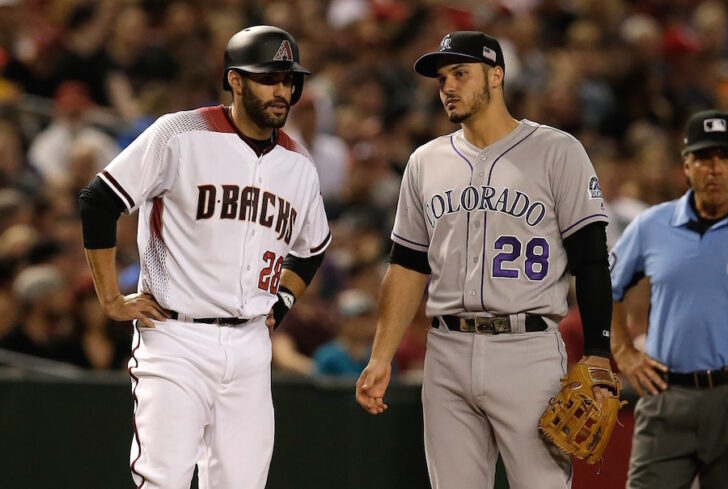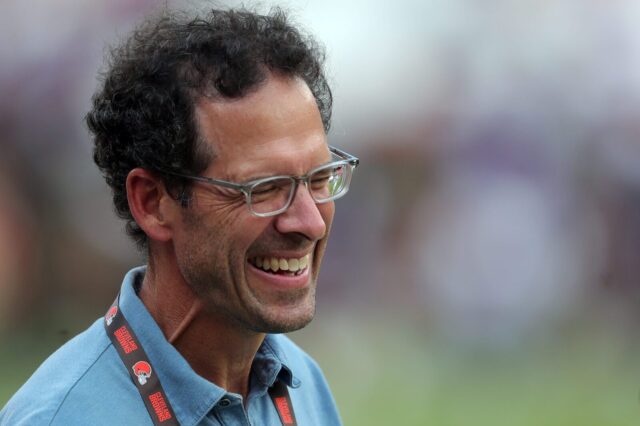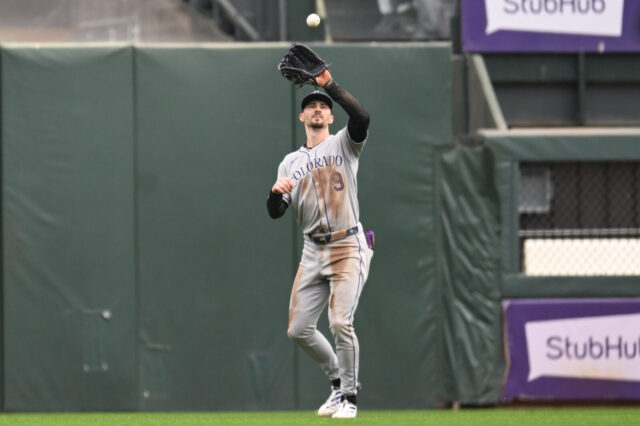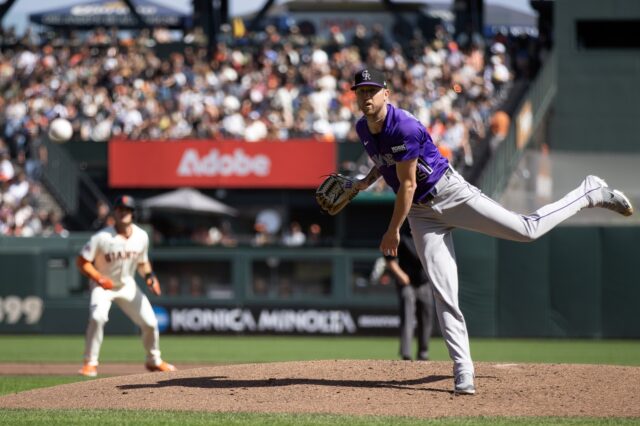Say what you will about the Colorado Rockies.
Take shots, if you’d like, at Coors Field, the humidor, the altitude, the payroll, the ownership, the inflated stats.
Those are all tired refrains – the easy way out for national media types and baseball elitests who don’t care to do their research on the Rockies, currently one of the best teams in baseball. Not only are the Rockies in the playoffs – one of just five teams from the National League and hailing from baseball’s toughest division, the NL West – but they’ve held a spot in the playoffs the entire season. The 2017 season required a little “fending off” down the stretch, but it certainly didn’t require any kind of Rocktober miracle, as was the case in 2007.
The Rockies have a general manager who entered the job amidst questions (perhaps even scoffs, perhaps even – admittedly – from me) but has done nothing but push all the right buttons. He’s made tough decisions (e.g., trading Troy Tulowitzki), and he’s built from within. He brought depth to a team that had been historically riddled with injury, a team that no matter how they played in April, May or June, seemed to run out of gas after the All-Star break. That didn’t happen in 2017.
Bridich also brought in manager Bud Black, who has made all the difference. That hire cannot be overlooked or under-appreciated. Prior to Black, the Rockies had a built a reputation of only hiring from within. The culture at 20th and Blake was that of family only, but Bridich boldly broke that mold. Black boldly believed – and proclaimed – that he could win, even in Colorado. Turns out he was right.
But managers can’t hit, pitch or field, and the Rockies did all of things as well or better than most teams in baseball, too. They’ve got two legitimate MVP candidates in Nolan Arenado and Charlie Blackmon (in no particular order).
Arenado has the best glove in baseball – at any position – and Diamond Dry feels the same at sea level or at a mile high. He hits for average, power and in the clutch. There’s no question he’s the game’s best third baseman.
Blackmon, as my dad recently told me, is a “ballplayer in the mold of Willie Mays.” My dad watched Mays play plenty of times, including in-person at the Polo Grounds. He also watched Blackmon go 3-for-6 on the final day of the season, even with the batting title in hand and a playoff game on the horizon. Say what you will about the thin air of Denver, Colo., but for a leadoff hitter to boast the second-highest batting average in the majors (.331), finish third in the NL in home runs (37) and finish eighth in RBIs (104; also setting the record for most ever by a leadoff hitter), all while missing just two games as a centerfielder? That’s a ballplayer, no matter what city appears on the front of his jersey.
The pitching might have had its ups and downs, but it had far more ups than downs this season in comparison to seasons past. It’s young and good, and if the staff appeared to slow down later in the season, can you imagine what the expectations will be next spring?
Zack Greinke will take the mound against the Rockies in the Wild Card game, but opposite of him is Jon Gray. Gray could very be the ace the Rockies have always coveted. Since August, he’s given up just 18 earned runs in 120.1 innings pitched. He’s practically been untouchable. In three starts against the Diamondbacks, Gray is 2-1, largely because of 26 strikeouts suffered by the Snakes. Greinke, meanwhile, started five times against Colorado. He collected two wins, one loss and two no-decisions. He’s given up six homers to Rockies batsmen. While Greinke has been solid against the Rockies, Gray has been better against Arizona.
Elsewhere on the Rockies roster, there are plenty of bright spots. D.J. LeMahieu is the definition of a professional hitter. Mark Reynolds had a season for the ages and is capable of changing a game with one swing of the bat. Trevor Story, Ian Desmond and Carlos Gonzalez all have had trying moments, but all of them currently swing red-hot bats. Black has no problem with giving an at-bat, in any circumstance, to Gerardo Parra (who has a .309 batting average), Pat Valaika (who hit 13 home runs in just 195 plate appearances) or Raimel Tapia (who boasts a .329 on base percentage and can go first to home in the blink of an eye).
You know what? This team is good – plain and simple.
And damn it, they belong in baseball’s postseason party.
If the MLB playoffs were handled correctly (that’s another column for another day), they’d get more than a one-game shot at proving that’s true. But unfortunately, they won’t.
Even better.
One game. One chance. To show that “Coors Field stats” don’t define a ballplayer. To show that an MVP is an MVP, regardless of where he plays. To show that Jon Gray is, in fact, an ace. To show that 2007 wasn’t some fluke.
Win this one and whatever happens against the Dodgers is a bonus. If the Rockies were to win the NLDS, it’s beyond validation. If they were to lose, it’s no fun, but it’s excusable: A mid-market team with a payroll that ranks 16th in the majors gets to take on the playoff shaky Dodgers – a team that spends the very most and nearly double the checks Dick Monfort scratches.
Lose in the Wild Card game?
Well, lose and it’s back to the same ol’ refrain. The Rockies will have to wait until 2018 to show that they’re indeed a real baseball team.
So, why not win? It’s time, Rockies. Time to quiet the naysayers. Time to show that Coors Field is unique, but at the same time, just another ballpark.
Rockies, I know what kind of ballclub you are and have been all season long. But, like it or not, the rest of the world still has its doubts.
It’s time to prove them all wrong. It’s time to show them you belong.



